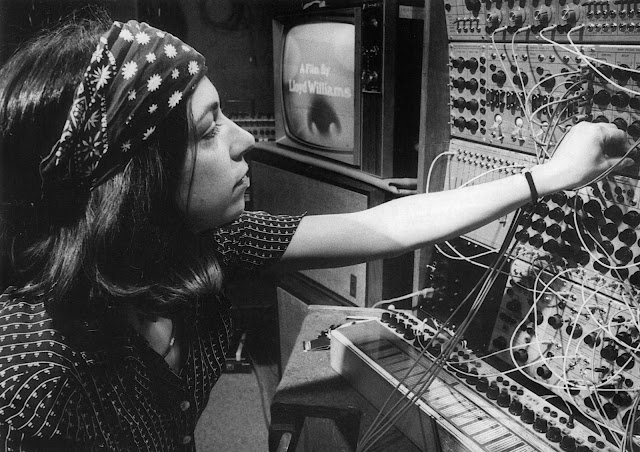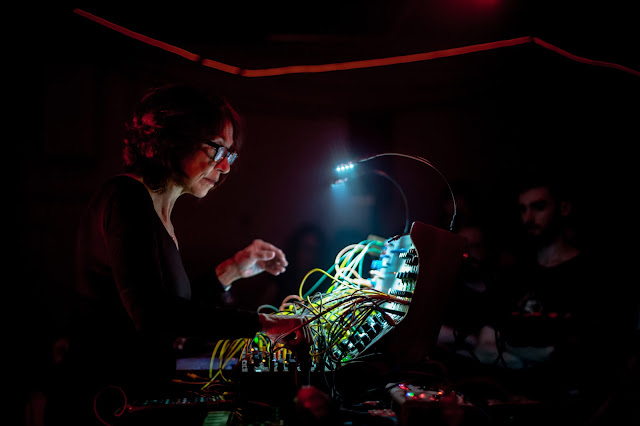Published on May 6, 2013 Arturiaweb·87 videos
"Check out our exclusive interview with synth legend Vince Clarke at his studio in New-York, talking about MiniBrute, his relation to synths and his up-coming projects."
Minibrutes on eBay
Update: and the press release:
"Synthpop Svengali Vince Clarke cherishes compact and bijou MiniBrute
“They’re French, but MiniBrute is in English! The MiniBrute features on my new electronic dance music record; I’m using it a lot for basses at the moment, and also for odd squeaky sounds.”
- Vince Clarke, 2013 (Erasure)
GRENOBLE, FRANCE: music software and hardware company Arturia is proud to announce that legendary synthpop Svengali Vince Clarke — musical mastermind behind one of the most successful songwriting duos of all time — has added a MiniBrute Analog Synthesizer to the stunning synth collection currently residing at his Brooklyn-based studio...
Depeche Mode, Yazoo, The Assembly, and Erasure all have two things in common: one, they were founded by Vince Clarke; two, they have all enjoyed catchy Clarke-penned, synth-driven Top Ten hits in the UK and beyond. In a noteworthy career spanning four decades and countless millions of records sold, Clarke has had more hit singles than most of us have had hot dinners, clocking up no fewer than 17 Top Ten entries in the UK with Erasure alone. And let’s not forget five consecutive chart-topping albums — not bad going in the increasingly disposable world of pop, be it synth-driven or otherwise.
Clearly, Clarke knows a thing or two about songwriting, as attested to by being honoured with 2009’s Ivor Novello Award for Outstanding Song Collection by BASCA (British Academy of Songwriters, Composers, and Authors). Of course, Clarke can comfortably find his way around a fair number of synths, too, as attested to by the well-earned songwriting success-funded collection of analogue classics currently residing at his NYC studio, recently relocated from a custom-built cabin in rural Maine to inner-city Brooklyn. But this is no millionaire’s museum piece, but rather a unique personal workspace, where each and every awe-inspiring instrument within regularly earns its keep on a variety of musical projects, with Clarke becoming something of a sought-after remixer of late, as well as collaborating with former Depeche Mode bandmate Martin Gore for the first time in 30-odd years as techno-inspired two-piece VCMG.
Yes, Vince Clarke certainly knows a great-sounding synth when he hears one, which is exactly why an Arturia MiniBrute Analog Synthesizer has made the transatlantic crossing to join him in his Brooklyn basement studio: “When I first tried the MiniBrute, the first thing that struck me was the fact that it’s small, so I thought, ‘Excellent! It will fit in my studio!’ The fact that it has MIDI and CV and Gate is pretty cool.”
While Clarke’s trademark British sense of humour shines forth for all to witness from the outset of this investigative pairing, there’s no denying the compact and bijou nature of the musical beast in question. Yet the Musikmesse International Press Award-winning MiniBrute manages to pack a lot of punch into its diminutive 390 x 325 x 70 mm frame. Setting a new standard for what a hardware monosynth should be, its 100 percent analogue audio signal path features an Oscillator Mixer (Sub, Sawtooth, Square, Triangle, White Noise, Audio In) and classic Steiner-Parker Multimode Filter (LP, BP, HP, Notch) approved by Nyle Steiner himself, together with additional analogue innovations: Metalizer (adds complex harmonics to the triangle waveform); Ultrasaw (adds a lively and bright ensemble effect to the Sawtooth waveform); and Brute FactorTM (adds anything from subtle overdrive to wreaking full-blown intermodulation havoc). These flexible features help the MiniBrute make its own distinctive musical mark alongside legendary analogue monosynths like the Minimoog, Sequential Circuits Pro-One, Korg MS-20, and ARP Odyssey — all of which Clarke, coincidentally, owns!
And all of which resonates deeply with this most musical Englishman in New York: “I really like the filter; you can put the resonance on full and get all those Kraftwerky-type sounds. It sounds like a synth with a Decimator or something like that on it! But whatever it does, or however it does it, I think you can get some very vicious sounds. The Brute Factor... that’s brutal!”
One thing’s for sure: present-day developments like the MiniBrute are helping to ensure that hardware synths are likely to remain Clarke’s calling card for the foreseeable future. “I personally think it’s great that all this hardware stuff’s coming out now; it’s what I grew up with,” he says. “I think there’s nothing that can compare to having a hands-on synth with knobs, dials, and sliders. For me, making sounds with a synth is also physical; I can use two hands and don’t have to pre-think or work it all out. So I think this resurgence in physical synths is a really cool thing.”
Never one for resting on his laurels, Clarke recently spread his wings with a couple of low-key DJ dates in Texas. Here, too, the MiniBrute might well be sharing the musical limelight with him in the not too distant future: “Rather than just play records, I’d like to incorporate some of the technology that I have into the shows as well. I could take along a sequencer or a synthesizer and actually mix it into the stuff that I’m playing.”
Compact and bijou... but packing a pure analogue punch wherever it may roam, MiniBrute is the revolutionary new analogue synthesizer from Arturia. Available now from a dealer near you..."
 "London’s Museum of Techno first opened its doors to the public in 1892. It is home to a fascinating array of early steam-powered drum machines and the James Soame Collection of Booming Kick Drums, the first collection of its type in the world.
"London’s Museum of Techno first opened its doors to the public in 1892. It is home to a fascinating array of early steam-powered drum machines and the James Soame Collection of Booming Kick Drums, the first collection of its type in the world.



















































